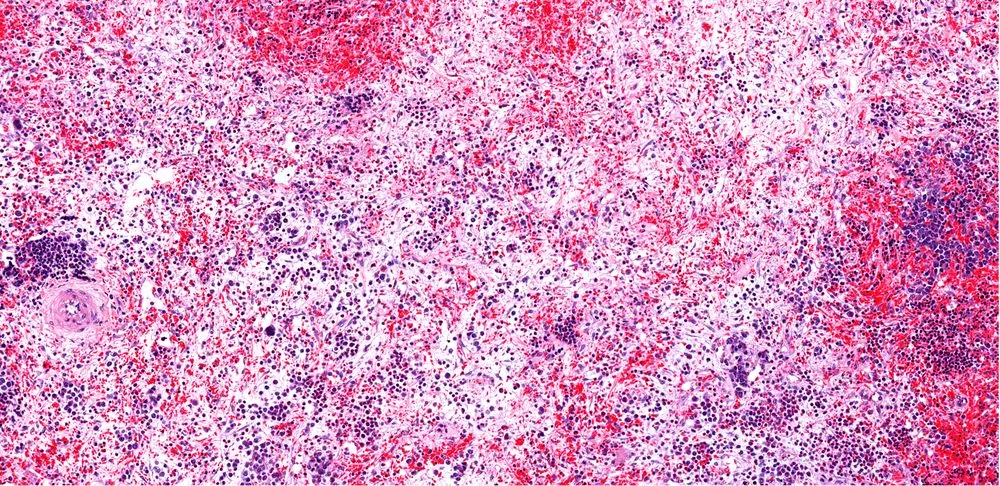MDS Awareness Day: Spotlight on Anemia and Transfusion Independence

MDS Awareness Day, observed on October 25th, is dedicated to raising awareness of myelodysplastic syndromes (MDS), a group of bone marrow disorders that primarily cause anemia, or a lack of red blood cells. Anemia is often the most challenging aspect of MDS, leading to symptoms like fatigue and shortness of breath, significantly affecting a patient’s quality of life (QoL).
Treating Anemia in MDS
In MDS, the bone marrow struggles to produce healthy red blood cells, leading to anemia. This often requires regular blood transfusions to manage. For many patients, these transfusions become a lifeline, needed every few weeks to replenish red blood cells and alleviate symptoms like fatigue and weakness.
50% to 90% of patients with MDS will need red blood cell (RBC) transfusions, and many become RBC transfusion dependent. Additionally, 30% to 50% of patients will require at least one platelet transfusion. However, frequent transfusions come with risks, making it essential to reduce reliance on them.
Many MDS treatments aim to alleviate anemia and achieve transfusion independence, meaning patients no longer need regular transfusions. Therapies like erythropoiesis-stimulating agents (ESAs), lenalidomide, and luspatercept help boost red blood cell production and extend the time patients can remain transfusion-free.
In the MEDALIST trial, 38% of patients treated with luspatercept achieved at least eight weeks of transfusion independence, with 28% maintaining it for at least 16 weeks.
What is Transfusion Independence?
Transfusion independence can greatly improve QoL by reducing the need for frequent clinic visits. However, even with reduced transfusions, patients still require monitoring for other MDS-related issues, like infections.
Complications of Blood Transfusions
Blood transfusions, while life-saving, come with risks, such as iron overload (a common complication of long-term transfusion therapy), transfusion reactions, and alloimmunization. These complications highlight the importance of therapies that reduce or eliminate the need for transfusions.
Recognize Progress this MDS Awareness Day and Keep Moving Research Forward
On MDS Awareness Day, it's vital to recognize the progress in treating anemia and achieving transfusion independence, improving both survival and quality of life for patients with MDS.
You can take part in advancing MDS research by participating in research studies and surveys through HealthTree. Researchers can view your anonymized answers and data in order to discover important findings and advances like those mentioned above.
You can get started today by clicking the button below.
Sources:
MDS Awareness Day, observed on October 25th, is dedicated to raising awareness of myelodysplastic syndromes (MDS), a group of bone marrow disorders that primarily cause anemia, or a lack of red blood cells. Anemia is often the most challenging aspect of MDS, leading to symptoms like fatigue and shortness of breath, significantly affecting a patient’s quality of life (QoL).
Treating Anemia in MDS
In MDS, the bone marrow struggles to produce healthy red blood cells, leading to anemia. This often requires regular blood transfusions to manage. For many patients, these transfusions become a lifeline, needed every few weeks to replenish red blood cells and alleviate symptoms like fatigue and weakness.
50% to 90% of patients with MDS will need red blood cell (RBC) transfusions, and many become RBC transfusion dependent. Additionally, 30% to 50% of patients will require at least one platelet transfusion. However, frequent transfusions come with risks, making it essential to reduce reliance on them.
Many MDS treatments aim to alleviate anemia and achieve transfusion independence, meaning patients no longer need regular transfusions. Therapies like erythropoiesis-stimulating agents (ESAs), lenalidomide, and luspatercept help boost red blood cell production and extend the time patients can remain transfusion-free.
In the MEDALIST trial, 38% of patients treated with luspatercept achieved at least eight weeks of transfusion independence, with 28% maintaining it for at least 16 weeks.
What is Transfusion Independence?
Transfusion independence can greatly improve QoL by reducing the need for frequent clinic visits. However, even with reduced transfusions, patients still require monitoring for other MDS-related issues, like infections.
Complications of Blood Transfusions
Blood transfusions, while life-saving, come with risks, such as iron overload (a common complication of long-term transfusion therapy), transfusion reactions, and alloimmunization. These complications highlight the importance of therapies that reduce or eliminate the need for transfusions.
Recognize Progress this MDS Awareness Day and Keep Moving Research Forward
On MDS Awareness Day, it's vital to recognize the progress in treating anemia and achieving transfusion independence, improving both survival and quality of life for patients with MDS.
You can take part in advancing MDS research by participating in research studies and surveys through HealthTree. Researchers can view your anonymized answers and data in order to discover important findings and advances like those mentioned above.
You can get started today by clicking the button below.
Sources:

about the author
Audrey Burton-Bethke
Audrey is a content writer and editor for the HealthTree Foundation. She originally joined the HealthTree Foundation in 2020. Audrey loves spending time with her supportive husband, energetic four-year-old, and new baby.
More on Core Education
Trending Articles
Get the Latest Myelodysplastic Syndromes Updates, Delivered to You.
By subscribing to the HealthTree newsletter, you'll receive the latest research, treatment updates, and expert insights to help you navigate your health.
Together we care.
Together we cure.
3x Faster.









